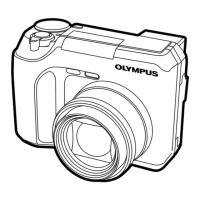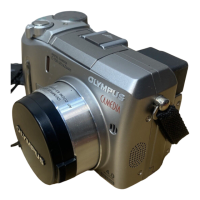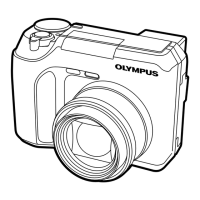SHORT COURSES HTTP://WWW.SHORTCOURSES.COM
21
arrow pad to display the Mode menu. With the CAMERA
tab highlighted, press the right arrow to activate the menu.
(In Movie mode, press the up arrow to select DIGITAL
ZOOM from the top menu, then jump to Step 3.)
2. Press the down arrow on the arrow pad to highlight
DIGITAL ZOOM, then press the right arrow to display your
choices.
3. Press the up or down arrow on the arrow pad to highlight
OFF (the default) or ON, then press OK once to confirm
your selection and again to hide the menu.
USING AUTO FLASH
Set the camera to Auto, Sports, Landscape, P, or Aperture-
priority shooting mode, and press the flash switch on top of
the camera to pop up the flash. In auto flash, no icon is shown
on the display.
SETTING THE FLASH INTENSITY CONTROL
1. With the Mode Dial set to P or A/S/M, press OK/Menu to
display the top menu, then press the right arrow on the
arrow pad to display the Mode menu. With the CAMERA
tab highlighted, press the right arrow to activate the menu.
2. Press the up or down arrow on the arrow pad to highlight
the flash correction icon and press the right arrow to
display a value (the default is 0).
3. Press the up or down arrow on the arrow pad to change the
flash exposure in one-third stop increments. Plus values
will lighten the flash illuminated part of the image and
minus values will darken it.
4. Press OK/Menu once to set the correction, then again to
hide the menu.
USING RED-EYE REDUCING FLASH
1. With the flash popped up and the camera in P or aperture-
priority mode, press the Flash button to display the red-eye
reducing eye-like icon. (You can’t use this flash mode in
sequential mode.)
2. Take the picture and you’ll notice a series of short flashes
before the main flash fires.
3. When finished, to return to auto flash mode, press the Flash
© COPYRIGHT 2001 BY DENNIS P. CURTIN
22
button until no flash icon is displayed on the monitor.
USING FILL-IN FLASH
1. With the flash popped up and the camera in P or aperture-
priority mode, press the Flash button to display the fill-in
flash icon (a lightning bolt). In Portrait mode, it’s the
default setting.
2. Take the picture and you’ll see the flash fire even in bright
sunlight.
3. When finished, to return to auto flash mode, press the Flash
button until no flash icon is displayed on the monitor.
USING SLOW SYNC FLASH
1. With the flash popped up and the Mode Dial set to P or A/S/
M, press the Flash button until the Slow Sync flash icon is
displayed.
2. Take the picture and be sure to hold the camera steady during
the entire exposure (or move it to blur the image creatively).
SELECTING THE SLOW SYNC MODE
1. With the Mode Dial set to P or A/S/M, press OK/Menu to
display the top menu, then press the right arrow on the
arrow pad to display the Mode menu. With the CAMERA
tab highlighted, press the right arrow to activate the menu.
2. Press the up or down arrow on the arrow pad to highlight
SLOW and press the right arrow to cascade the menu.
3. Press the up or down arrow on the arrow pad to highlight
your choice (SLOW1 is the default), and press OK/Menu
once to confirm your selection again to hide the menu.
TURNING OFF THE FLASH
■ If the flash is popped up, press it down until it locks in
place.
TAKING MACRO CLOSE-UPS
1. With the Mode Dial set to P or A/S/M mode, press the
Macro/Spot button to choose one of the following settings:
■ To use macro mode with normal metering (page 32),
display the macro mode flower blossom.
■ To use macro mode with spot metering (page 32), display

